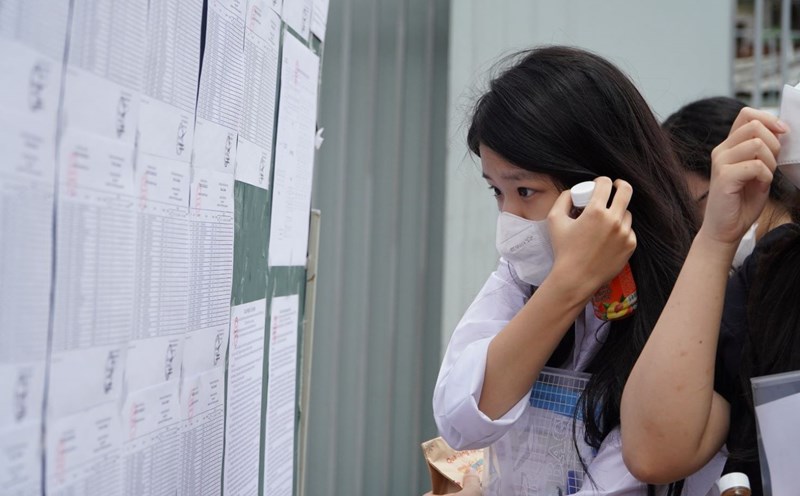The Ministry of Education and Training (MOET) has just issued Circular 6.2025 amending and supplementing the regulations on university and college admissions for Preschool Education, applicable from 2025.
The new regulation stipulates that universities are allowed to use multiple admission methods for the same program, major, and group of majors at the same time, and must convert the scores of the methods to a common scale, instead of having each standard score for each method.
MSc. Cu Xuan Tien - Head of the Admissions and Student Affairs Department of the University of Economics and Law (Ho Chi Minh City National University), assessed that the new points in the admission regulations that the Ministry of Education and Training has just announced are very suitable for the current context, for candidates who are the first generation of the new general education program.
Such as removing the limit on admission combinations, eliminating early admission, adding incentive points, reward points, weighting the common number of subjects for admission combinations, etc.
Similarly, MSc. Pham Thai Son - Director of the Admissions and Communications Center of Ho Chi Minh City University of Industry and Trade, also said that the 2025 university admission regulations will have some new adjustments suitable for universities and candidates, including regulations on expanding admission combinations to help universities attract more candidates and open up opportunities for students with strengths in different subjects.
"The benefits of expanding the admission combination help candidates have more options, not being limited to a fixed subject group. Students can choose the combination that suits their needs," said Mr. Son.
However, Mr. Son also warned that expanding too many admission combinations without clear assessment criteria could lead to uneven input quality.
With the regulation requiring schools to convert scores of methods to a common scale, he said that universities must develop and publicize a score conversion table between admission methods such as high school exams, transcripts, international certificates, etc. to ensure fairness, not causing disadvantages or giving excessive priority to any group of candidates.
MSc. Cu Xuan Tien also expressed his concern about the regulation on converting equivalent scores, because this is not an easy and complicated task, requiring schools to be very careful when making the conversion rule. Mr. Tien analyzed that the difficulty level of each test method is different. For example, the competency assessment test and the high school graduation exam will often have different difficulty.
In addition, although schools have data on admission scores for previous years, the conversion coefficient for each year will depend on the scores of each exam, the number and quality of candidates submitting to each method.
Therefore, Mr. Tien believes that it is not easy to come up with a suitable conversion rule, and hopes that the Ministry of Education and Training will soon have instructions on this.
"In the competency assessment exam, the number of candidates achieving over 1,000 points or more is quite small, however, if converted to a scale of 30, it is equivalent to 25 points. In the high school graduation exam, the number of candidates with a score of 25 is quite large," Mr. Tien gave an example.











